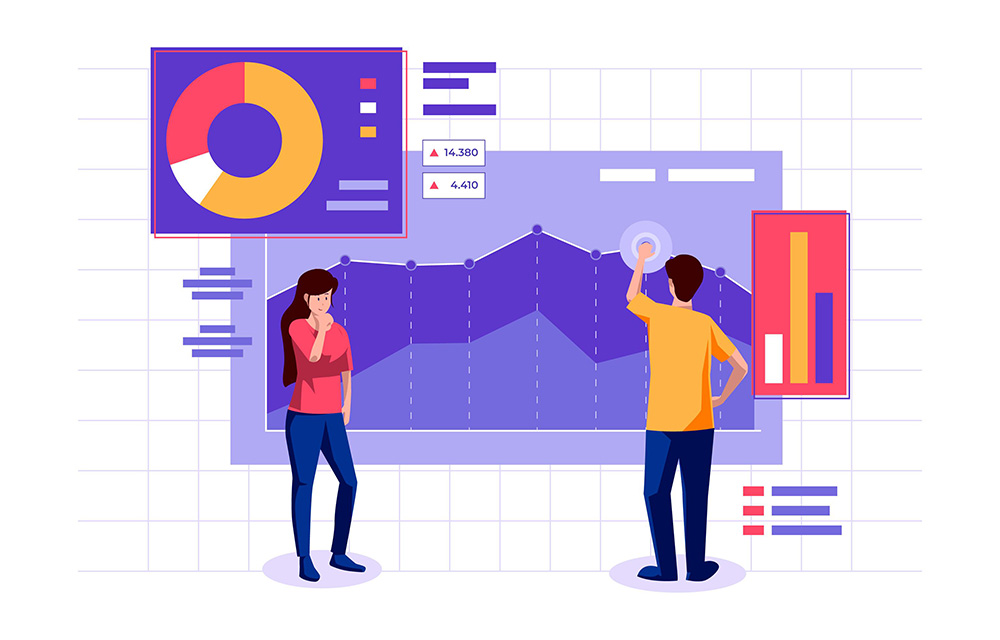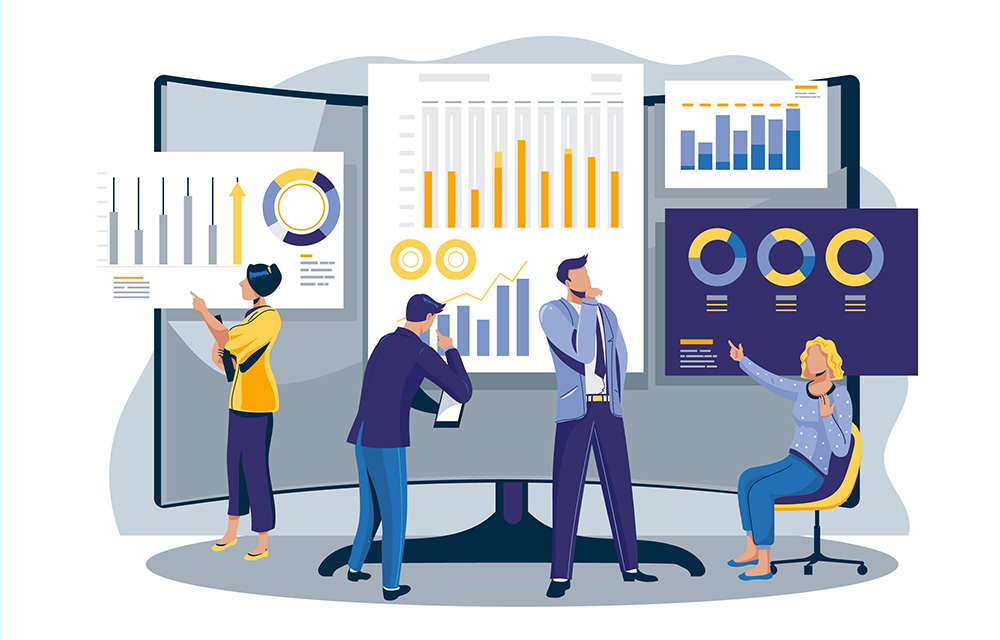In today's highly competitive business landscape, the key to success lies in identifying and capitalizing on n...
Brickwork Blogs


Mergers and acquisitions (M&A) can be transformative events for organizations, providing opportunities for growth, synergy, and market expansion. However, these endeavors are not without risks. Assessing the potential risks associated with a target organization is crucial to make informed decisions and ensuring a successful integration. Predictive analytics, with its ability to harness data and extract meaningful insights, has emerged as a powerful tool to assess future risks during M&A. In this blog, we will explore how predictive analytics can be leveraged to evaluate and mitigate risks, enabling organizations to embark on M&A with confidence.
Understanding Predictive Analytics
Predictive analytics involves utilizing historical data, statistical algorithms, and machine learning techniques to make predictions about future outcomes. By analyzing patterns, trends, and correlations in data, predictive analytics helps organizations anticipate potential risks and opportunities. In the context of M&A, predictive analytics empowers decision-makers to gain insights into the target organization's future risks and make strategic choices based on data-driven assessments.
Assessing Financial Stability
One of the key considerations in M&A is the financial stability of the target organization. Predictive analytics can analyze financial data, such as revenue, cash flow, and debt levels, to assess the target company's financial health. By applying predictive models, organizations can estimate future financial performance, identify potential red flags, and evaluate the risks associated with the target organization's financial stability.
Analyzing Market and Industry Trends
Predictive analytics can help organizations assess the potential risks stemming from market and industry trends. By analyzing historical market data, consumer behavior, and macroeconomic indicators, organizations can predict future market conditions and industry dynamics. This analysis enables decision-makers to understand the target organization's vulnerability to market fluctuations, changing customer preferences, and disruptive technologies. By proactively addressing these risks, organizations can align their M&A strategies accordingly.
Identifying Operational Risks
Operational risks can significantly impact the success of an M&A endeavor. Predictive analytics can analyze operational data, such as production efficiency, supply chain performance, and quality control metrics, to assess the target organization's operational risks. By identifying areas of potential operational inefficiencies or bottlenecks, organizations can devise strategies to address these risks during the integration process.
Evaluating Customer and Employee Satisfaction
Predictive analytics can help organizations evaluate customer and employee satisfaction within the target organization. By analyzing customer feedback, sentiment analysis, and employee engagement data, organizations can identify potential risks related to customer churn, declining satisfaction levels, or employee turnover. Understanding these risks allows organizations to develop retention strategies and create a plan for addressing any potential issues during the integration process.
Mitigating Legal and Regulatory Risks
Legal and regulatory risks can pose significant challenges in M&A transactions. Predictive analytics can analyze legal and regulatory data, track compliance records, and identify patterns or trends that may indicate potential risks. By understanding the target organization's legal and regulatory landscape, organizations can ensure compliance, identify potential liabilities, and devise strategies to mitigate legal and regulatory risks during the integration process.

The Evolution of Predictive Risk Identification Methods
In an ever-changing and complex business landscape, organizations are increasingly relying on predictive risk identification methods to proactively assess and mitigate potential risks. These methods have evolved significantly over time, driven by advancements in technology, data availability, and analytical techniques. In this blog, we will explore the evolution of predictive risk identification methods and discuss how organizations can leverage these methods to enhance risk management practices.
1. Traditional Risk Identification
Traditional risk identification methods relied on subjective assessments and historical data analysis. Organizations primarily focused on known risks and used techniques such as risk checklists, brainstorming sessions, and historical incident reviews. While these methods provided valuable insights, they had limitations in assessing future risks and lacked the ability to handle large volumes of data.
2. Data-driven Risk Identification
The emergence of big data and advanced analytics marked a significant shift in risk identification methods. Organizations started leveraging vast amounts of structured and unstructured data from various sources, including internal systems, social media, and external databases. Statistical analysis, data mining, and machine learning techniques enabled organizations to identify patterns, correlations, and anomalies that could signify potential risks. This data-driven approach enhanced the accuracy and scope of risk identification.
3. Predictive Analytics
Predictive analytics brought a more sophisticated and forward-looking approach to risk identification. Organizations began predicting future risks and their potential impacts by leveraging historical data, statistical modeling, and machine learning algorithms. Predictive analytics allows organizations to go beyond reactive risk management and adopt a proactive stance by identifying emerging risks, forecasting trends, and simulating scenarios. This enabled timely risk mitigation strategies and improved decision-making.
4. Artificial Intelligence and Machine Learning
The integration of artificial intelligence (AI) and machine learning (ML) technologies revolutionized predictive risk identification methods. AI-powered algorithms can autonomously analyze vast amounts of data in real time, detect patterns, and identify hidden risks that may not be apparent to human analysts. ML algorithms can continuously learn and adapt, improving risk identification accuracy and efficiency over time. These technologies enable organizations to harness the power of automation, natural language processing, and cognitive computing to identify and manage risks effectively.
5. Integrated Risk Management Platforms
The evolution of risk identification methods led to the development of integrated risk management (IRM) platforms. These platforms provide a centralized system for collecting, analyzing, and monitoring various types of risk data. They incorporate predictive analytics, AI, and ML capabilities to facilitate real-time risk identification, scenario modeling, and risk assessment. IRM platforms offer a holistic view of an organization's risk landscape, enabling proactive risk management and fostering collaboration across departments.
6. Real-time Risk Monitoring and Early Warning Systems
Advancements in technology have enabled real-time risk monitoring and the development of early warning systems. Organizations can now leverage automated data collection, real-time analytics, and AI-driven algorithms to detect and respond to risks as they emerge. These systems provide timely alerts, enabling organizations to take proactive measures to mitigate potential risks before they escalate. Predictive analytics provides organizations with the capability to assess future risks associated with M&A transactions. By leveraging historical data, statistical models, and machine learning algorithms, organizations can gain valuable insights into financial stability, market trends, operational risks, customer and employee satisfaction, and legal and regulatory risks. These insights enable decision-makers to make informed choices, develop robust integration strategies, and mitigate potential risks during the M&A process. By harnessing the power of predictive analytics, organizations can embark on M&A transactions with confidence, maximizing the chances of successful integration and long-term value creation.
How can Brickwork help you?
Business Analysts at Brickwork are highly trained and qualified to help you with predictive analytics which can be used to assess future risks in M&A. There are various business strategy tools namely Porters, Value Chain, PESTEL, SWOT, BCG, etc.
There are different services provided by Brickwork like market sizing and forecasting, market potential, market segmentation, trend analysis, general research, etc. Click here to avail now!


